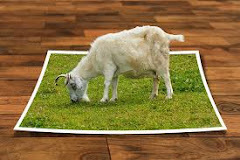Photoshop 3D Modeling Guide - Step By Step


Photoshop is used for a variety of purposes such as creating web graphics, designing logos and branding, retouching photos, and creating digital art. It is a complex tool with many features and capabilities, but it can be broken down into several main components.
The Photoshop interface is composed of various elements that enable you to perform a variety of tasks. These include the menu bar, tool options bar, workspace, and panels.
The menu bar is located at the top of the interface and provides access to all of the tools and features available in Photoshop. The tool options bar is located below the menu bar and displays the options and settings for the currently selected tool.
The workspace is the main area where you will be working on your images. You can customize the workspace to suit your needs and create multiple workspaces for different tasks.
The panels are located on the right-hand side of the interface and provide access to various features and functions such as layers, adjustments, and filters.
Layers are one of the key features of Photoshop and enable you to work on different parts of an image separately. Each layer can contain different elements such as text, shapes, or images, and you can move, resize, and edit them independently of each other.
Adjustments are used to alter the color, brightness, and contrast of an image. They can be applied to individual layers or to the entire image. Photoshop has a wide range of adjustment options such as levels, curves, and color balance.
Filters are used to apply special effects to an image. They can be used to blur or sharpen an image, add noise, or create artistic effects such as oil painting or watercolor.
Selections enable you to isolate specific areas of an image for editing. You can use a variety of tools to make selections such as the marquee tool, lasso tool, and magic wand tool.
Retouching is the process of improving the appearance of an image by removing blemishes, smoothing skin, and reducing wrinkles. Photoshop has a range of retouching tools such as the healing brush tool, clone stamp tool, and spot healing brush tool.
Once you have finished editing your image, you can export it in a variety of file formats such as JPEG, PNG, and PSD. Photoshop also enables you to save your images for the web, print, or other specific purposes.
In conclusion, Photoshop is a powerful and versatile tool that can be used for a variety of purposes such as photo editing, graphic design, and digital art. While it may seem daunting at first, with practice and patience, you can become proficient in using the software and achieve amazing results.
Comments
Post a Comment